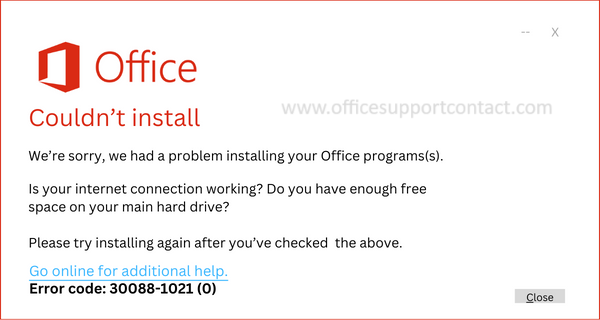Quick Solutions to fix Winodws Installation Error 0x8007025d
The Windows error number 0x8007025d is frequently encountered when doing file operations like copying, moving, or installing files. An error notice stating, "Windows cannot install required files," is frequently displayed beside it.
Windows Installation Error 0x8007025d may have several causes.
There are several reasons why error 0x8007025d may arise. Comprehending these causes can aid in more effective troubleshooting and issue resolution.
a) Installation media that is defective or damaged:
If this error occurs when you try to install Windows, it can be the result of an issue with the installation media, like a USB drive or DVD that is damaged or scratched.
b) Outdated or incompatible hardware drivers:
Error 0x8007025d may arise due to problems resulting from outdated or incompatible drivers during file operations.
c) A defective hard disk or RAM:
This issue can be caused by malfunctioning hardware, especially RAM modules or hard drives, which can impede file transfers.
d) Virus or malware infections:
File operations may be interfered with by malicious software, which could lead to error 0x8007025d.
File operations may be interfered with by malicious software, which could lead to error 0x8007025d.
Simple Ways to Solve 0x8007025d Windows Installation Error:
a) Inspect installation media: Make sure the installation medium (USB or DVD) is free of corruption and scratches if you run into this issue when installing Windows. Try utilizing an alternative installation source if at all possible.
b) Update hardware drivers: 0x8007025d is one of the problems that can be caused by outdated or incompatible drivers. You can use a reputable driver updater program or go to the manufacturer's website to update your drivers to the most recent versions.
b) Update hardware drivers: 0x8007025d is one of the problems that can be caused by outdated or incompatible drivers. You can use a reputable driver updater program or go to the manufacturer's website to update your drivers to the most recent versions.
c) Examine hardware components: To find any possible problems, do diagnostic tests on your hard drive and RAM. To assist with this, Windows comes with built-in utilities like the CHKDSK software and Windows Memory Diagnostic. Replace the hardware if it is found to be defective.
d) Check for malware: Use a reliable antivirus or anti-malware program to do a comprehensive system scan. Eliminate any dangers that have been found, and make sure your system is safe from infections going forward.
e) Turn off unused services and starting apps: An excessive number of background services and apps may eat up system resources and cause file operation issues. Using the Task Manager or an outside system optimization tool, disable pointless services and start apps.
d) Check for malware: Use a reliable antivirus or anti-malware program to do a comprehensive system scan. Eliminate any dangers that have been found, and make sure your system is safe from infections going forward.
e) Turn off unused services and starting apps: An excessive number of background services and apps may eat up system resources and cause file operation issues. Using the Task Manager or an outside system optimization tool, disable pointless services and start apps.




Comments
Post a Comment